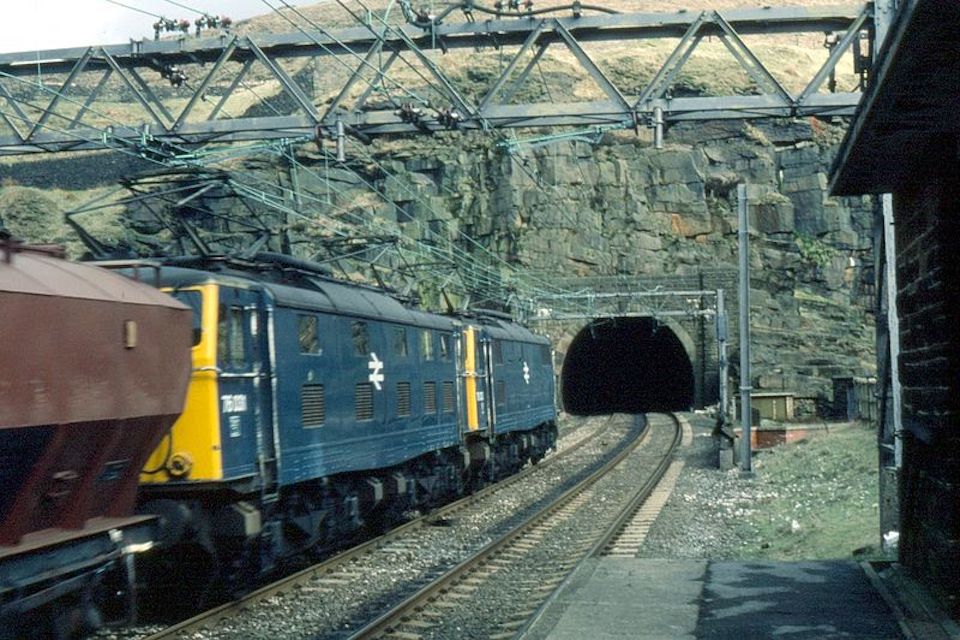A freight-only line in the north of England has closed. Not that many people have noticed. The almost defunct “Deepcar Branch,” which served a largely redundant steelworks, has been taken out of service by the national infrastructure agency, Network Rail. In recent years, the only traffic has been an infrequent test train and a charter train for enthusiasts that ran once. However, the closure could pave the way for a grand new purpose.
The official closure of a short branch line in Sheffield could spark life into a long-held ambition to expand the city’s tram network. Deepcar’s demise could bring Supertram’s surprise, but only if the will and the money are in place. The last vestige of a pioneering electrified route between Sheffield and Manchester might just be the spark of energy needed for outlying communities on the edge of the sprawling English city.
Former Woodhead Route
There was once a railway line between Manchester and Sheffield, which crossed the formidable Pennines – a chain of rolling hills often known as the backbone of England. The so-called “Woodhead Route” was an early pioneer of railway electrification, and its mainstay was freight, serving heavy industry on both ends of the line, connecting Yorkshire’s coalfields and Sheffield’s steel mills with the factories and ports of Manchester and Liverpool. A passenger service ran from the now-closed Sheffield Victoria to the swept-away Manchester Exchange and the much diminished Salford Central.

The rationalisation of the British network in the 1960s, and the lingering demise of heavy industry in the UK, coupled with the availability of other routes, put the line in jeopardy. Its much-opposed closure saw passenger traffic withdrawn in 1970, and freight services finally ceased in 1981. A western stub remains in frequent use as part of the Manchester suburban network. However, the mountainous section between the two cities has been reduced to a hiking trail, and the only traffic in the Sheffield section has been occasional trains on a short branch line to a now largely redundant steelworks at Stocksbridge on the northwest outskirts of the city. It is that “Deepcar Branch” which has now closed.
Tram to replace train
The removal of formal traffic from the line could, ironically, open the way for a revival, albeit in a somewhat different capacity. With freight traffic removed, the possibility now exists for the line to be repurposed as a significant extension of the Sheffield “Supertram” network. Campaigners had been hopeful that the line could form part of a larger project, the Barrow Hill line, which would run from the northwest of Sheffield, via several suburbs of the city, to neighbouring Chesterfield. The project had been the subject of a (since abandoned) government initiative to reopen railways across the UK.

While the prospect of a heavy rail connection remains a distant ambition, the possibility of a tram line seems much more feasible. Sheffield’s network is mainly street-based. However, there are significant sections of the Supertram network which reuse heavy rail tracks. Notably, there is a section connecting with the neighbouring city of Rotherham, which operates over shared tracks. A “tram-train” could also run between the outlying Sheffield suburbs, and Chesterfield under such an arrangement.
Viable new life as light rail
In tram terms, the economics of the line seem much more attractive. The potential terminus at Stocksbridge is co-located with a popular retail park, and the intermediate stops could include a popular football stadium and the city centre location of the former Victoria station. The line would also serve the Barrow Hill railway heritage centre – a popular leisure destination, and railway technical centre. If any good is to come from the Deepcar demise, then it could be in the shape of the Sheffield Supertram.

As a footnote, the unique electric locomotives, built to serve the Woodhead Line and designated Class 76 in the UK, were sold to Nederlandse Spoorwegen (NS) for use on the Dutch network. The electrification of the Woodhead Route, at 1500v DC, was unique in the UK, but remains the standard in The Netherlands. A prototype unit had been loaned to the Dutch railways in 1945, and was known across the network as “Tommy” – an affectionate nickname for British soldiers during the Second World War.